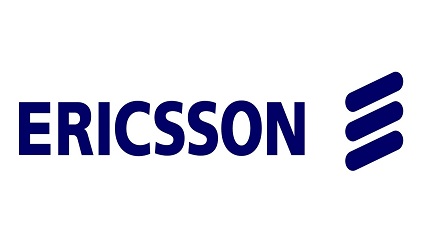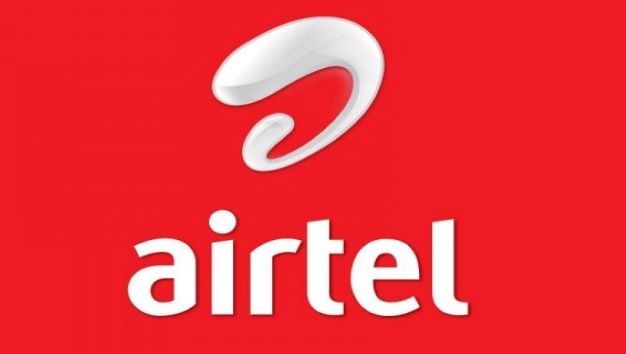Telecom
Ericsson, EY Study Maps Successful Mobile Operator Strategies

Ericsson and EY collaborate to identify three distinct strategies adopted by successful mobile operators, dubbed Frontrunners.
Successful operators share a common focus on network performance and customer experience; differentiation, innovation and technology approaches vary by strategy
Frontrunner revenues grew at 9.6 percent CAGR, their competitors at 2.7%, while average in markets with no Frontrunners is -1.4% (2010-2014).
With traditional revenues under pressure and mobile data use soaring, operators have been forced to evolve both their networks and their business models. Some have been more successful than others.
A study from Ericsson, in collaboration with Ernst and Young, has identified and classified these operators as Frontrunners.
Between 2010 and 2014, Frontrunners enjoyed a 9.6% CAGR while competitors in their markets achieved only 2.7%.
In undertaking this research, the results of which are launched today, Ericsson has identified three distinct strategies adopted by Frontrunners. Significantly, what is good for the end user is also good for the operator.
Frontrunner strategies include:
Quality-Led Progression: These Frontrunners differentiate through high-performing networks and high brand preference
Market-Led Adaptation: Includes Frontrunners that differentiate through quick adaptation to market conditions
Offering-Led Transformation: Refers to Frontrunners that differentiate by being first to market with uniquely designed offerings
The study also revealed a number of ways in which Frontrunners are similar including their views on connectivity and services as differentiators rather than commodities, and their focus on innovating new revenue streams rather than maximizing old ones.
Frontrunners display greater interaction between marketing and technical roles, rather than the traditional silos, and they leverage network performance by either utilizing superior network performance as a differentiator or by improving network performance to meet customer expectations.
Speaking on the development, Martin Sebelius, executive director of Nordic Advisory, EY, said: “We clearly see that despite their different strategies, frontrunner operators share a common commitment to network quality. Not surprisingly, Frontrunners constantly seek new ways of challenging industry conventions to make connectivity more relevant to people, business and society.”
Also, Stéphane Téral, research director, Mobile Infrastructure and Carrier Economics, Infonetics Research, now part of IHS Inc., said: “This is a well-reasoned study that helps operators in different markets answer the universal question of where to invest and generate returns. Operators are trying to keep up with the growth in data traffic while facing significant economic conditions, including flat-to-declining revenue in often saturated markets. As it provides a nuanced view drawing on a global scope, this study is exactly what is needed for operators to thrive in any market condition.
“In addition, mobile consumers are very savvy today and understanding what makes operators tick can help them make better decisions as to where to lock in their subscriptions — I think this study could be as interesting to consumers as it is to operators” .
On his part, Patrik Cerwall, head of Radio Strategic and Tactical Marketing, Ericsson, said: “We wanted to understand what makes operators successful in order to be the best partner to our customers. It may sound self-serving, but Frontrunners focus on growth, both enhancing the core business while at the same time exploring new markets and capabilities to secure future revenues, such as IoT (Internet of Things) and vertical solutions.
“The journey toward 5G in 2020 will be marked by both new technology advances and new business models, but that transformation really started with the shift from voice to data-driven networking. The operators who are managing that transition successfully may provide the blueprint for success in 5G,” Cerwall said.
Understanding these strategies can help more operators become Frontrunners. This may have a beneficial effect for all operators, as it appears that the presence of a Frontrunner in any given market benefits all operators in that market: peers of operators in markets with Frontrunners are growing at 2.7 percent while markets without Frontrunners have negative growth of 1.4 percent.
In 2013, most of the 12 identified Frontrunners were associated with the Quality-led strategy, leveraging their size and assets to deliver superior quality, and thereby achieve profitable growth. Market-led operators were in the minority and Offering-led operators had not yet joined the Frontrunner ranks.
In 2014, the number of Frontrunners increased to around 20 and included Offering-led operators. By 2015, it is projected that there will be 30 or more Frontrunners, with distribution between strategies starting to even out.
It is important to recognize that Frontrunners are not necessary market share leaders in their respective regions. In fact, in 2013, most Frontrunners were #3 by market position.
By 2015, it is projected that this, too, will even out with Frontrunners having representation across the top three market share positions.
Telecom
Airtel Africa Foundation Celebrates International Volunteer Day, Honours Employee Volunteers

Airtel Africa Foundation, through Airtel Nigeria, has marked International Volunteer Day 2025 by celebrating the impact of the Employee Volunteer Programme (EVP), a flagship initiative by which employees volunteer their time, expertise, and personal resources to advancing the Foundation’s mission across 14 African markets.

The celebration brought together volunteers at the Airtel Nigeria Headquarters in Lagos for moments of team bonding activities, testimonials, and volunteer spotlights. The event also served as a call to action, encouraging more employees to register for EVP activities and join the volunteer community.
The EVP has become a cornerstone of Airtel Africa Foundation’s community impact, empowering employees to drive local CSR initiatives and champion causes that promote education, digital skills, environmental responsibility, and youth empowerment. Through the programme, volunteers have contributed significantly to initiatives such as the International Day of Education Essay Competition, Teacher-for-a-Day sessions, beach clean-ups, market sensitisation exercises to reduce plastic waste, and the Airtel-3MTT NextGen Fellowship for young Nigerians.
Speaking about the celebration, Dinesh Balsingh, Airtel Nigeria Chief Executive Officer, said, “International Volunteer Day reminds us that real impact begins with people who are willing to show up and serve. Today we honour the incredible dedication of Airtel employees, whose selfless commitment of time and talent is the engine behind our progress. Their contribution is the backbone of our work and the reason we continue to transform communities across Africa.”
Over the years, the EVP in Nigeria has delivered tangible outcomes through numerous impactful initiatives such as financial donations to the Lagos State Government COVID-19 control efforts. In 2025 alone, volunteers have contributed more than 200 hours of service, reaching over 100,000 beneficiaries.
Commenting on the commitment of Airtel Nigeria’s employees, Femi Adeniran, Director, Corporate Communications & CSR, said, “Volunteering is at the heart of who we are. Behind every empowered learner, every restored environment, and every connected community is an individual who believed in making a difference, and we are thankful for your participation. Our mission remains clear: to use technology, resources, and our collective humanity to build a digitally inclusive, socially responsible, and sustainable Africa.”
International Volunteer Day provides a global moment to honour volunteers whose contributions often go unseen but deliver lasting impact. As its EVP continues to grow, Airtel Africa Foundation remains committed to expanding access to education, digital literacy, environmental care, and opportunities for underserved communities across the continent.
Telecom
Nigeria Dominates 2025 TikTok Sub-Saharan Africa Awards with Six Wins

Nigerian creators have emerged dominant at the 2025 TikTok Awards for Sub-Saharan Africa, winning six of the ten categories at the ceremony held in Johannesburg, South Africa.

TikTok Sub-Saharan Africa Awards
The awards, themed “New Era, New Icons”, celebrated outstanding creativity across the continent, with Nigeria’s victories underscoring its growing influence in digital culture and entertainment.
Raja’atu Muhammed Ibrahim, known as @diaryofanortherncook, from Sokoto, won the prestigious Creator of the Year Award, recognised for her cinematic storytelling of Northern Nigerian cuisine. Abuja-based Brian Nwana (@briannwana) clinched Storyteller of the Year, while Izzi Boye (@izziboye) was named Education Creator of the Year.
Other Nigerian winners included Belove Olocha (@beloveolocha) for Entertainment Creator of the Year, Dejoke Ogunbiyi (@noositiwantiwa_) for Social Impact Creator of the Year, and Crown Uzama, popularly known as Shallipopi (@theycallmeshallipopipp), who took home Artist of the Year.
Shallipopi, whose hit track “Laho” dominated African soundwaves in 2025, thanked TikTok for supporting upcoming artists and providing a platform to shine. “When Nigeria creates, the world moves,” he told fans during his acceptance speech.
TikTok’s Head of Content Operations for Sub-Saharan Africa, Boniswa Sidwaba, praised the winners, noting that Nigerian creators had redefined what it means to be a digital storyteller. “Tonight’s ceremony was a gathering of trailblazers who turned short video clips into cultural movements,” she said.
Other winners from across the continent included Tanzania’s Fanuel John Masamaki (@zerobrainer0), who won Video of the Year, Kenya’s @tunero_animations as Rising Star of the Year, South Africa’s @malumfoodie for Food Creator of the Year, and Kenya’s @zozasportscast for Sports Creator of the Year.
The ceremony, supported by brands such as NIVEA, Coca-Cola, PEP, inDrive and Dis-Chem, will be broadcast exclusively on TikTok LIVE on Dec. 11 at 19:00 WAT via the @tiktok.africa account.
Telecom
MTN Nigeria Announces Winners of the 2025 Nigeria PachiPanda Challenge

MTN Nigeria has announced the winners of the 2025 Nigeria PachiPanda Challenge, a national innovation programme delivered in partnership with Worldwide Fund for Nature (WWF) through its local partner, the Nigerian Conservation Foundation (NCF), and the United Nations Development Programme (UNDP) Nigeria.

L – R: Promise Ogochukwu, OneGrid Energies; Emmanuel Ezea, OneGrid Energies, Lantana Elhassan, Head of Exploration, Accelerator Lab, UNDP Nigeria; Valentine Nnamani, OneGrid Energies; trio winner of the MTN 2025 Pachipanda Challenge, held at MTN RoofTop Plaza, Ikoyi.
The competition attracted over 2000 applications from young innovators across the country and concluded with a 3-day sprint event that featured masterclasses and pitch presentations at the MTN Rooftop Event Centre, Falomo, Ikoyi, Lagos. Ten finalists, comprising seven individuals and three teams, competed for top honours following a rigorous multi-stage screening process.
Team OneGrid Energies emerged overall winner for its solution that addresses energy access in underserved communities. The team of Emmanuel Ezea, Ogochukwu Ogene, and Valentine Nnamani upcycle plastic bottles and e-waste lithium ion batteries to create affordable lanterns for households without reliable electricity. The team also introduced smart solar-powered charging stations operated by rural women, creating economic opportunities and supporting environmental impact.
Joshua Ndaman secured second place with his innovative solution, BuyScrap, a tech-driven platform that streamlines the collection and recycling of electronic waste. By ensuring that discarded electronics are ethically reused and repurposed, BuyScrap supports a circular economy and provides a reliable link between households and processors in the e-waste value chain.
Divine Peter secured third place with HopeForge Engineering, an initiative that designs and produces affordable recycling equipment for green businesses using recyclable materials. His focus on automating traditional manual equipment aims to increase productivity and make sustainable tools more accessible for small and medium-sized enterpriOlayinkases.
The winners received ₦3,000,000, ₦2,000,000, and ₦1,500,000 respectively. They will now represent Nigeria at the Africa PachiPanda Challenge where they will compete against champions from across the continent.
Tobe Okigbo, Chief Corporate Services and Sustainability Officer at MTN Nigeria, emphasised the importance of youth-led innovation in advancing climate action and community resilience. “Innovation should go beyond solving problems; it should be bankable and sustainable, ensuring long-term value for both society and the innovators themselves,” he noted.
Dr. Joseph Onoja, Director-General of NCF, praised the creativity of the finalists, stating, “Every finalist here is a winner, and we will continue to work with partners like MTN, UNDP, and WWF to nurture these ideas and build a better future for Nigeria.”
Representing UNDP Nigeria, Lantana Elhassan, Head of Exploration, Accelerator Lab, described the potential of the finalists’ solutions to inspire systemic change across Africa’s innovation landscape. She highlighted the role of tech tools in helping participants improve their prototypes and scale their solutions.
During the event week, finalists received tailored training through masterclass sessions that enhance their business skills and strengthened their solutions. Facilitators included Bankole Oloruntoba, CEO, Nigeria Climate Innovation Centre (NCIC); Chinwe Udo-Davis, Founder & CEO, Instollar; Nifemi Oluboyede, Chief Product Officer, Credit Direct; and Uche Aniche, Founder, Rebel Seed Capital & Convener, Startup South.
Judges comprised experts in sustainability and innovation including Dr. Tiwalade Adeniyi, Head of ESG, Solon; Dr. William Tsuma, Chief Innovation Officer, UNDP Nigeria; Maximus Ugwuoke, Country Director, Carbon Craft Africa; Peju Ibekwe, CEO, Sterling One Foundation; Temitope Okunnu, Founder, Fabe International; and Yewande Adeyi, Senior Manager, ESG Advisory Services, KPMG West Africa.
The Africa-wide finals will bring together leading innovators from across the continent to showcase their work to industry experts and investors.
For more information and updates on the winners’ journey, visit https://www.mtn.ng/sustainability or contact [email protected]

 Telecom1 day ago
Telecom1 day agoNigeria Lacks AI-Ready Data Centres, Trails in Capacity – Nnamani

 E-Financial1 day ago
E-Financial1 day agoCAC to Shut Down Unregistered PoS Operators by January 2026

 General News1 day ago
General News1 day agoNiDCOM Launches Diaspora Startup Challenge to Boost Nigerian Talent

 Telecom1 day ago
Telecom1 day agoAnambra Leads Southeast in Digital Governance Under Soludo’s ICT Agenda

 General News1 day ago
General News1 day agoOptimus AI LABS CEO Showcases AI Breakthroughs in Nigeria’s Financial Sector

 News1 day ago
News1 day agoLagos Launches Tele-Vet, Nigeria’s First Veterinary Call Centre

 General News1 day ago
General News1 day agoPromoPrint Rekindles Nigerian Resilience @ 25th Anniversary

 Telecom12 hours ago
Telecom12 hours agoNigeria Dominates 2025 TikTok Sub-Saharan Africa Awards with Six Wins














